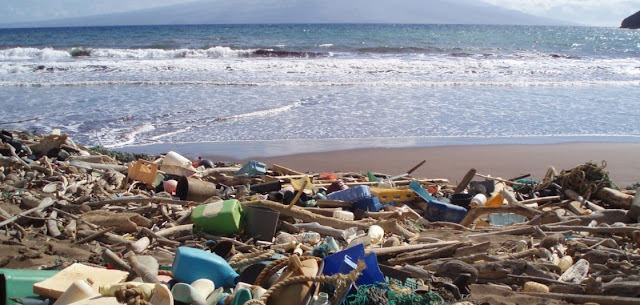SINGLE-USE PLASTIC HARMS THE ENVIRONMENT
Single-Use Plastic Harms the Environment
 |
| Marine Debris - Photo Credit: National Park Service |
Plastic materials are made from either crude oil or natural gas
both are non-renewable resources. Because plastic items do not decompose in
nature, they pile up an pollute. Did you know there are over 8
million metric tons of plastic in the ocean? And did you know that each
year over 27
million tons of plastic is dumped in the landfills?
Plastic pollution can harm wildlife directly and by
destroying their habitat. Mistaking it for food, wildlife can ingest
plastic debris. In the oceans, plastic pollution can entangle and kill marine life. Plastic pollution also
damages the habitat of river and ocean dwelling wildlife. Depleted oxygen
levels, and reduced light penetration, and modified
habitat structures are ways in which plastic pollution affects wildlife
habitat.
What can you do?
The best way to help reduce the plastic pollution is to
avoid using single-use plastic items, such as plastic bags, straws, food
wrappers, and plastic toothbrushes. Instead use durable,
reusable, and eco-friendly products. Another step you can take to help
reduce plastic pollution is to participate in a coastal
cleanup. You can also help your community reduce the amount of plastic
pollution that enters the waterway by writing your local officials and request
the city builds “Green
Infrastructure”, which reduce the amount of stormwater
that enters the waterways.
A note about photodegradable plastics
There are plastics that can break down when exposed to light
called “photodegradable
plastics”. The problem is photodegradable plastics do not degrade
completely instead turn into microplastics.
These small pieces of plastic can be ingested by fish and other marine life.
Sources:
https://www.epa.gov/trash-free-waters/impacts-mismanaged-trash
https://www.eia.gov/tools/faqs/faq.php?id=34&t=6
https://www.nps.gov/subjects/oceans/ocean-plastics.html
https://oceanservice.noaa.gov/hazards/marinedebris/plastics-in-the-ocean.html
https://www.viridescence.us/2018/09/durable-reusable-eco-friendly-products.html
https://www.viridescence.us/2020/04/five-ways-to-reduce-water-pollution.html



Comments
Post a Comment